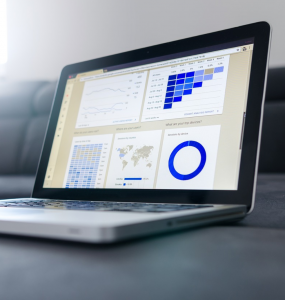As an event professional, you know that data can be a powerful tool in your arsenal for its ability to provide you with meaningful insights into your clients and attendees. But data is only useful if you can understand it, and that isn’t always easy. And that’s where data visualization tools come in.
 Data visualization solutions give you the ability to take information and translate it into charts, graphics, and other forms that are easier to interpret. This makes the data more accessible to you or anyone you may need to share it with, like event sponsors, as the images are ideal for presentations.
Data visualization solutions give you the ability to take information and translate it into charts, graphics, and other forms that are easier to interpret. This makes the data more accessible to you or anyone you may need to share it with, like event sponsors, as the images are ideal for presentations.
There are a lot of data visualization tools on the market today, so figuring out which one is right for you might seem challenging. To help you select a suitable option, here are some of the leading solutions available that can meet the needs of event professionals.

Tableau is often considered the leader in the data visualization realm, and their reputation is justified. It is ideal for incredibly large data sets and integrates seamlessly with a variety of advanced database solutions. The company has worked hard to make the creation of graphics and images as simple as possible and focuses on outputs that are naturally easy to understand.
In some cases, Tableau may offer more power than an event professional needs, depending on the amount of data you have and how structured it is, but it is worth exploring.

If you’re looking for a free tool to help you create a striking visual for a series of events, then TimelineJS is your answer. It’s incredibly easy to use and doesn’t require coding skills to get started.
You can use a number of media formats to create the timeline, allowing the entire graphic to be interactive and visually engaging. The tool is exceptionally designed, making it a suitable option for beginners, too.

When you need a chart, then Google Charts is an excellent option. The tool is free and fairly intuitive, so you don’t need to be tech-savvy to give it a try. You can choose from a variety of formats including pie, line, bar, area, and tree, letting you present the information in the ideal form.
Google Charts can interact with a range of data source, including popular options like Google Sheets and Salesforce, making it a strong choice for those who already use a compatible system for tracking their data. There is some coding involved in the process, but the supporting documentation is relatively robust, so professionals with some understanding of coding can adapt to it pretty quickly.

Another option that doesn’t inherently require coding is Plotly. Data can be uploaded in a simple CSV file, making it ideal for professionals who store their data in Microsoft Excel or a similar spreadsheet or use a solution that allows data to be downloaded as a CSV.
Plotly can be accessed through a web-based interface, so you can create charts from almost any internet connected device. The majority of the solution is accessible at no-cost, though certain chart types are behind a paywall.

RAWGraphs is another free option for those who prefer to avoid coding and capture much of their data in spreadsheets. The solution also offers a web-based interface, so you can access the system from almost anywhere. You can select from a wide selection of visual models, many of which are quite stunning to behold.

When it comes to simplicity, Charted is hard to beat. All you need to do is upload a CSV file or Google Sheet, and you’re ready to begin.
This solution is relatively basic, making it ideal for beginners who only need to access common chart types, like line and bar graphs. But, the charts are well-presented and easy to customize, so it is definitely a suitable option, especially since its free to use.
There are other data visualization tools out there, some of which require extensive knowledge of data analytics or coding languages, but the ones above are excellent places to start when you need a quick way to make your data relatable and easy to understand.
Catherine Reed
Latest posts by Catherine Reed (see all)
- Increase Your Event’s Social Presence by Creating Photo-Worthy Moments - March 6, 2020
- How to Make the Most of Content Production Opportunities at Events - March 3, 2020
- Is Your WiFi Ready for Live-Streaming? - April 25, 2019

